Table of Contents
Choosing the right bedroom colors to complement dark furniture can be a challenging yet rewarding task. The perfect color scheme can turn a bedroom into a tranquil retreat, while the wrong colors can create a jarring visual clash.
In this comprehensive guide, we will explore the most popular bedroom colors for dark furniture, the best accent colors to enhance the overall aesthetic, and the colors to avoid. We will delve into the fascinating world of color psychology and how it can be utilized to create a soothing and relaxing atmosphere in your bedroom.
Whether you're aiming for a cozy and intimate ambiance or a serene and calming environment, this article will equip you with the knowledge to transform your bedroom into a harmonious sanctuary.
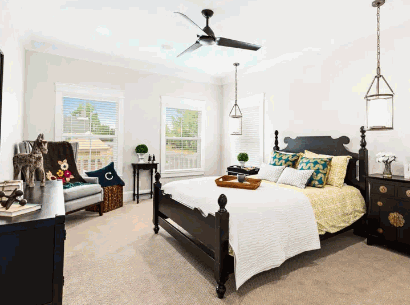
Selecting the perfect bedroom colors to complement dark furniture requires a thoughtful approach to interior design and decor. The interplay between wall paint and color schemes is crucial in creating an ambiance that harmonizes with the furniture.
Check out: Furniture For Small Bedroom
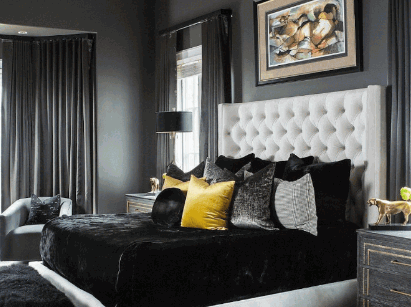
Several bedroom colors stand out as popular choices for complementing dark furniture, each contributing to a unique ambiance and aesthetic in interior design and decor.
Neutral tones like gray and beige are timeless options that add a sense of sophistication and balance to a room. These colors can help create a calming and relaxing environment, making them well-suited for bedroom spaces.
Deep jewel tones such as emerald green or sapphire blue can bring a luxurious and regal feel, especially when paired with dark wood furniture. Their rich hues create a sense of opulence and elegance, elevating the overall look of the bedroom.
Navy blue is a versatile and sophisticated choice for bedroom colors, especially when paired with dark furniture, adding a touch of elegance to the overall interior design and decor.
It brings a sense of calm and tranquility, creating a serene environment for relaxation. The deep, rich hue of navy blue complements dark furniture, creating a classic and timeless look. When used as a wall paint, it provides a stunning backdrop for artwork and accents, enhancing the visual appeal of the room. Navy blue also works seamlessly with a variety of color schemes, allowing for endless possibilities to personalize the space. Its versatility lends itself well to various design styles, from traditional to modern, making it a sought-after choice for many homeowners.
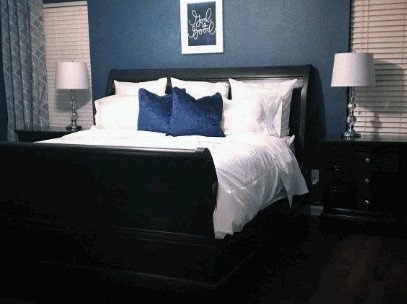
Forest green creates a sense of tranquility and warmth when used as a bedroom color alongside dark furniture, enriching the interior design and decor with natural and calming undertones.
It brings the soothing essence of nature indoors, creating a serene and restful environment that encourages relaxation. The deep, rich hue of forest green complements the boldness of dark wooden furniture, enhancing the room with a timeless and elegant aesthetic. When paired with complementary color schemes, such as earthy browns and creamy neutrals, forest green adds depth and character to the overall ambiance, making it a popular choice for those seeking a harmonious and inviting bedroom retreat.
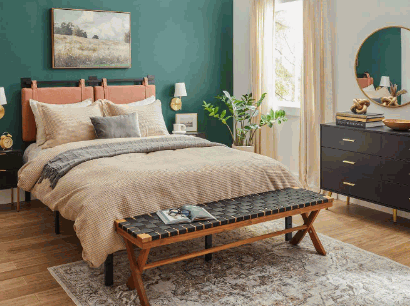
Eggplant purple infuses a sense of luxury and opulence into bedroom decor when paired with dark furniture, creating a captivating and regal ambiance in the interior design.
This rich and deep hue adds an air of sophistication to the space, evoking a sense of warmth and comfort. When used as wall paint, eggplant purple serves as a striking backdrop against which dark furniture stands out, creating a visually stunning contrast. Its versatility allows for various color schemes, from pairing with gold accents for a lavish feel to a more modern look when combined with silver or pewter.
The incorporation of eggplant purple transforms the bedroom into a sanctuary of elegance and style, making it an exquisite choice for interior decor.
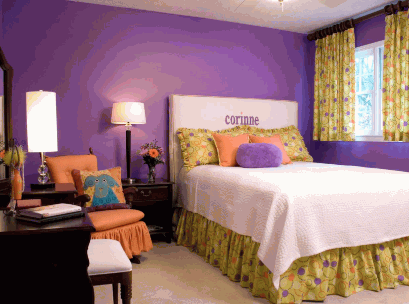
Charcoal gray offers a modern and sophisticated aesthetic for bedroom colors, seamlessly complementing dark furniture and enhancing the interior design and decor with an understated elegance.
Its contemporary appeal lies in its ability to create a serene yet striking ambiance, providing a neutral backdrop for various design elements. When paired with dark furniture, charcoal gray on the walls can bring a sense of depth and richness, making the room feel cozy and intimate.
The versatility of this color allows for a wide range of accent colors, from muted pastels to vibrant jewel tones, providing ample room for personalization and creativity in the overall color scheme.
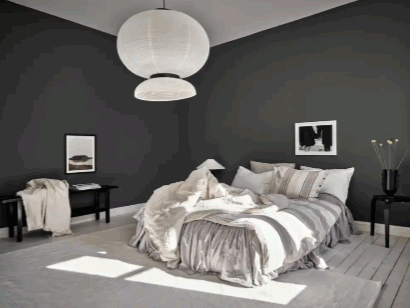
Rich red evokes a sense of passion and drama when incorporated as a bedroom color alongside dark furniture, adding vibrancy and character to the interior design and decor.
The bold and impactful nature of rich red not only brings depth and warmth to the walls but also sets the tone for the entire room. When paired with dark furniture, it creates a striking contrast and a sense of opulence, making the space feel luxurious and inviting. Using rich red in a bedroom color scheme allows for versatile decorating options.
Whether combined with neutral tones for a sophisticated look or with metallic accents for a more glamorous feel, it adds a touch of elegance and sophistication to the overall aesthetic.
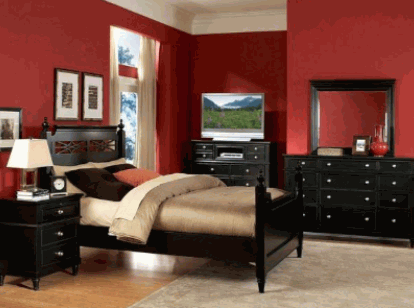
Choosing the best accent colors to complement dark furniture is crucial in enhancing the overall interior design and decor, adding depth and visual interest to the room.
The right accent color can play a pivotal role in creating a balanced and harmonious look. When paired with dark furniture, accent colors can bring life to the space, breaking the monotony and creating focal points. They have the power to evoke certain moods and emotions within a room, and can greatly influence the overall ambiance.
From bold and bright hues to soft pastels, the choice of accent colors allows for personal expression and creativity in interior design.
Gold serves as a luxurious accent color that complements dark furniture, infusing a sense of opulence and elegance into the interior design and decor.
The use of gold as an accent color adds a touch of sophistication and warmth to the space, creating a striking contrast against the deep tones of the furniture. Its reflective quality can bring a subtle shimmer to the room, enhancing the overall ambiance.
When paired with rich, deep wall paint such as navy blue or emerald green, gold accentuates the luxurious feel, creating a regal and inviting atmosphere. The combination of gold accents and dark furniture contributes to a cohesive and stylish interior design. It's a timeless choice that exudes a sense of luxury and refinement.
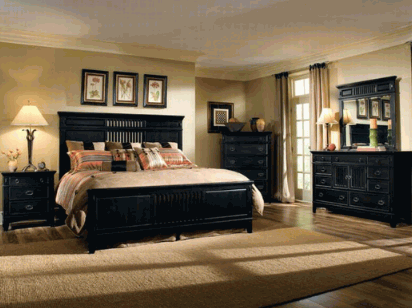
White accentuates the contrast and creates a sense of brightness when used as an accent color with dark furniture, contributing to a harmonious and visually appealing interior design and decor.
The crisp and clean look of white against the richness of dark furniture establishes a striking balance within the space. This versatile pairing allows for an elegant and sophisticated appeal, amplifying the room's aesthetics. The addition of white as an accent color can also influence the wall paint and color schemes, bringing a sense of depth and dimension to the overall interior design. Its serene and calming effect adds a touch of modernity while enhancing the visual impact of the living space.

Blush pink introduces a soft and romantic ambiance to the interior design and decor when used as an accent color alongside dark furniture, creating a serene and charming atmosphere.
It effortlessly enriches the overall aesthetic, serving as a delicate contrast to the deep tones of dark furniture, elevating the room with a touch of sophistication. The gentle hue of blush pink infuses a sense of tranquility and warmth, making it a versatile choice for wall paint that complements various color schemes.
Whether incorporated through furniture accents, throw pillows, or artwork, blush pink complements the richness of dark furniture, enhancing the visual appeal and imbuing the space with a soothing allure.
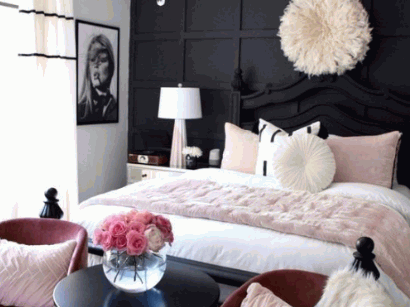
Mustard yellow infuses a sense of warmth and vibrancy into the interior design and decor when used as an accent color alongside dark furniture, creating a lively and energetic aesthetic.
The bold and cheery disposition of mustard yellow brings an inviting pop of color to any space. When paired with darker furniture pieces, it adds a striking contrast, making the room feel dynamic and visually intriguing. This vibrant hue has the power to enliven and uplift the atmosphere, becoming the focal point that draws the eye. Incorporating mustard yellow into wall paint or in decor accents can revitalize the entire color scheme, injecting a sense of playfulness while still maintaining a sophisticated ambiance.
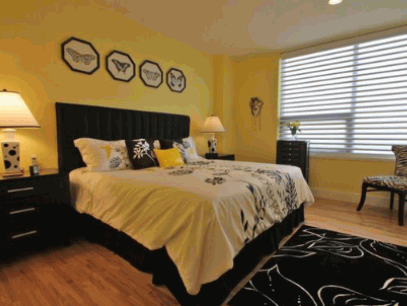
Emerald green adds a touch of luxury and freshness to the interior design and decor when used as an accent color alongside dark furniture, creating a captivating and vibrant ambiance.
The deep, rich hue of emerald green against the backdrop of dark furniture adds depth and character to any space. It effortlessly infuses a sense of opulence and sophistication, making the room come alive with its energy. When paired with neutral wall paint, emerald green accents can bring a pop of color that elevates the entire color scheme, adding a sense of balance and harmony to the overall design.
The use of emerald green in accessories and upholstery can tie together the entire look, creating a unified and cohesive feel throughout the room.
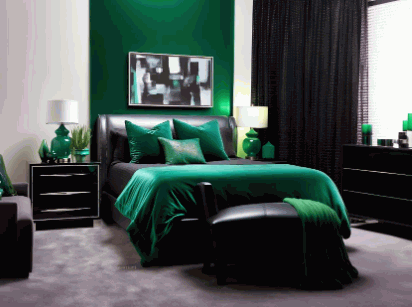
Avoiding certain colors when pairing them with dark furniture is crucial in maintaining a cohesive and visually appealing interior design and decor, ensuring that the room ambiance is not compromised.
The dark furniture serves as a focal point in the room, and the colors chosen to complement it can make a significant difference. Opting for light, neutral shades, such as soft greys, creams, or pale blues, can help create a balanced and harmonious look. Avoiding overly vibrant or contrasting colors can also prevent the space from feeling overwhelming. It's important to consider how different colors interact with the dark furniture to achieve a cohesive and inviting atmosphere.
Bright neon colors can disrupt the visual harmony and ambiance of interior design and decor when paired with dark furniture, creating a jarring and discordant effect within the room.
The juxtaposition of bright neon hues against the backdrop of dark furniture can be visually overwhelming, leading to a clash of tones that detracts from the overall aesthetic appeal. The intense vibrancy of neon colors tends to draw attention away from the rich elegance of dark wood or leather furnishings, resulting in a chaotic and unbalanced atmosphere.
This combination can also pose challenges when coordinating wall paint and color schemes, often leading to a sense of visual disarray and a lack of cohesion within the space.
Light pastel colors may create a washed-out and muted appearance when used with dark furniture, potentially diminishing the visual impact and cohesiveness of the interior design and decor.
This combination can lead to a lack of contrast and depth in the overall design scheme. While pastels can imbue a sense of tranquility and softness, when paired with dark furniture, the contrast between the two elements may not be pronounced enough to create a striking visual effect.
Pastel colors may also pose a challenge when it comes to wall paint selection and color schemes, as they might not complement the dark furniture as harmoniously as bolder or more vibrant colors would.
Pure white may lack the necessary contrast and depth when used as a primary color alongside dark furniture, potentially detracting from the overall interior design and decor.
This combination can create a visual imbalance, leading to a stark and harsh contrast that may overwhelm the space. Pure white walls can be prone to showing dirt and marks, requiring frequent maintenance. The limited color palette may also inhibit the room from feeling warm and inviting, as the stark contrast can create a cold and unwelcoming atmosphere.
In terms of color schemes, incorporating only white and dark colors may restrict the flexibility of adding other accent hues, limiting the creative potential for a cohesive and harmonious design.
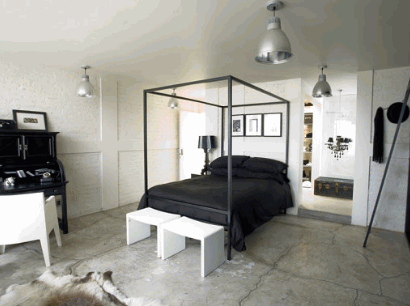
Leveraging color psychology can significantly contribute to creating a relaxing ambiance in a bedroom with dark furniture, enhancing the interior design and decor to promote tranquility and comfort.
By carefully selecting the wall paint color and incorporating harmonious color schemes, the overall feel of the room can be transformed. Soft, soothing hues such as pale blue, lavender, or sage green can complement the dark furniture, instilling a sense of calm.
Texture and lighting play essential roles in achieving the desired atmosphere, with warm, gentle lighting and luxurious textures further enhancing the relaxing ambiance.
Incorporating calming colors in a bedroom with dark furniture can foster a serene and tranquil environment, aligning with the principles of color psychology to promote relaxation and peace.
The choice of soothing hues such as soft blues, gentle greens, or muted earthy tones can complement the deep tones of the furniture. These calming colors induce a sense of calm and warmth, creating a harmonious balance in the room. When selecting wall paint and color schemes, it's essential to consider the interplay between light and dark elements to achieve visual equilibrium. This integration of calming colors not only enhances the overall interior design but also contributes to a more restful and inviting atmosphere.
Infusing cozy colors in a bedroom with dark furniture can evoke a sense of warmth and comfort, aligning with the principles of color psychology to create a snug and inviting space.
These warm and inviting hues such as soft neutrals, warm creams, soothing greys, or gentle pastels can help balance the visual weight of dark furniture, preventing the room from feeling too heavy or somber. Incorporating warm-toned wall paint and color schemes can effectively soften the overall impact of dark furniture, creating a harmonious and comforting atmosphere. This thoughtful integration of cozy colors enriches the bedroom's interior design, imparting a welcoming and tranquil ambiance.
Utilizing earthy tones in a bedroom with dark furniture can promote a sense of grounding and connection to nature, aligning with the principles of color psychology to enrich interior design and decor with organic warmth.
These earthy tones evoke a serene and tranquil ambiance, creating a cozy retreat within the bedroom. Incorporating warm neutrals like taupe, terracotta, or olive green can enhance the space's visual appeal, complementing the richness of the dark furniture.
Earthy tones provide a versatile backdrop for various decor elements, from natural textures like wood and wicker to vibrant pops of color in accent pieces or artwork. They contribute to a cohesive and balanced aesthetic, elevating the overall ambiance of the room.